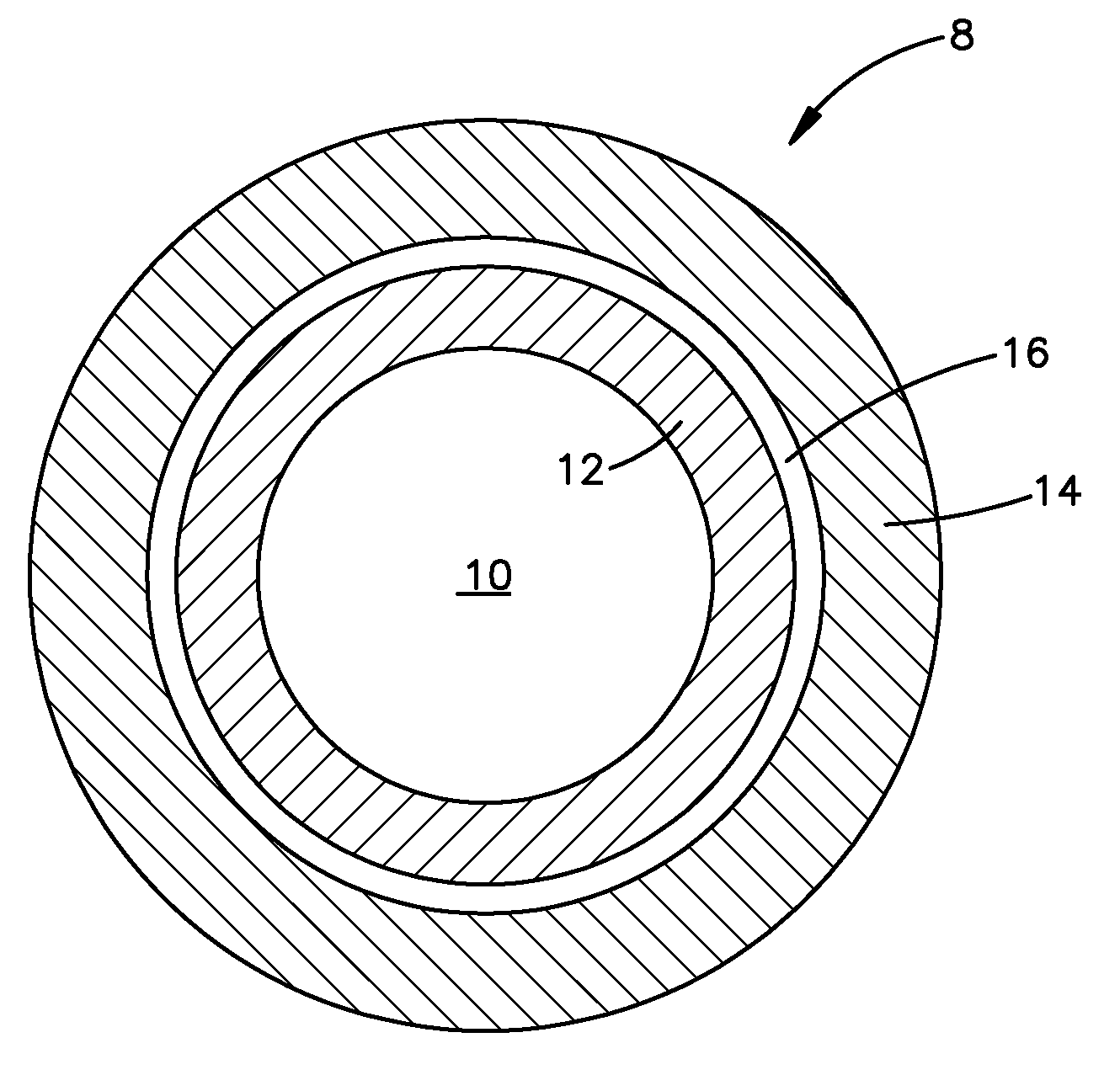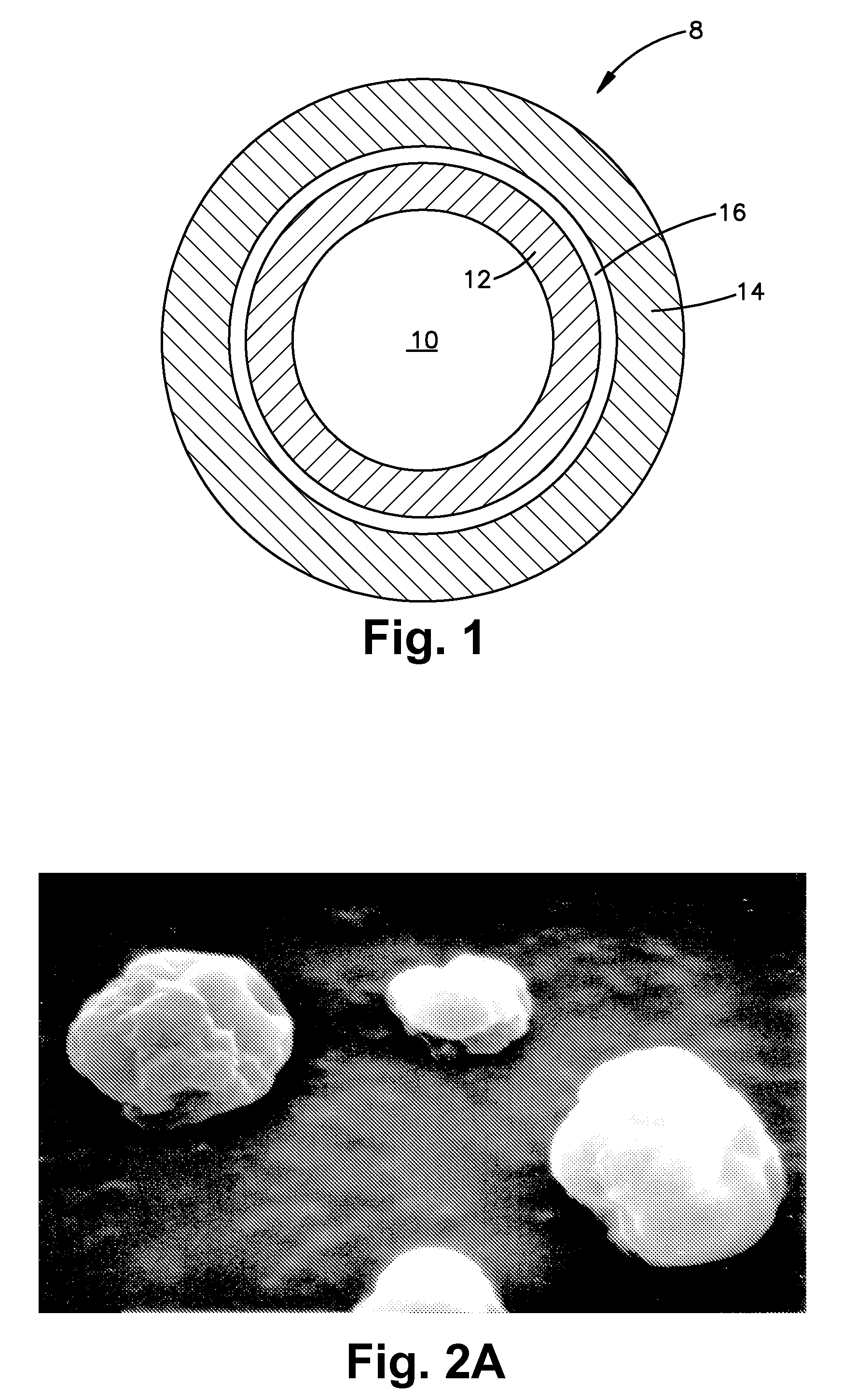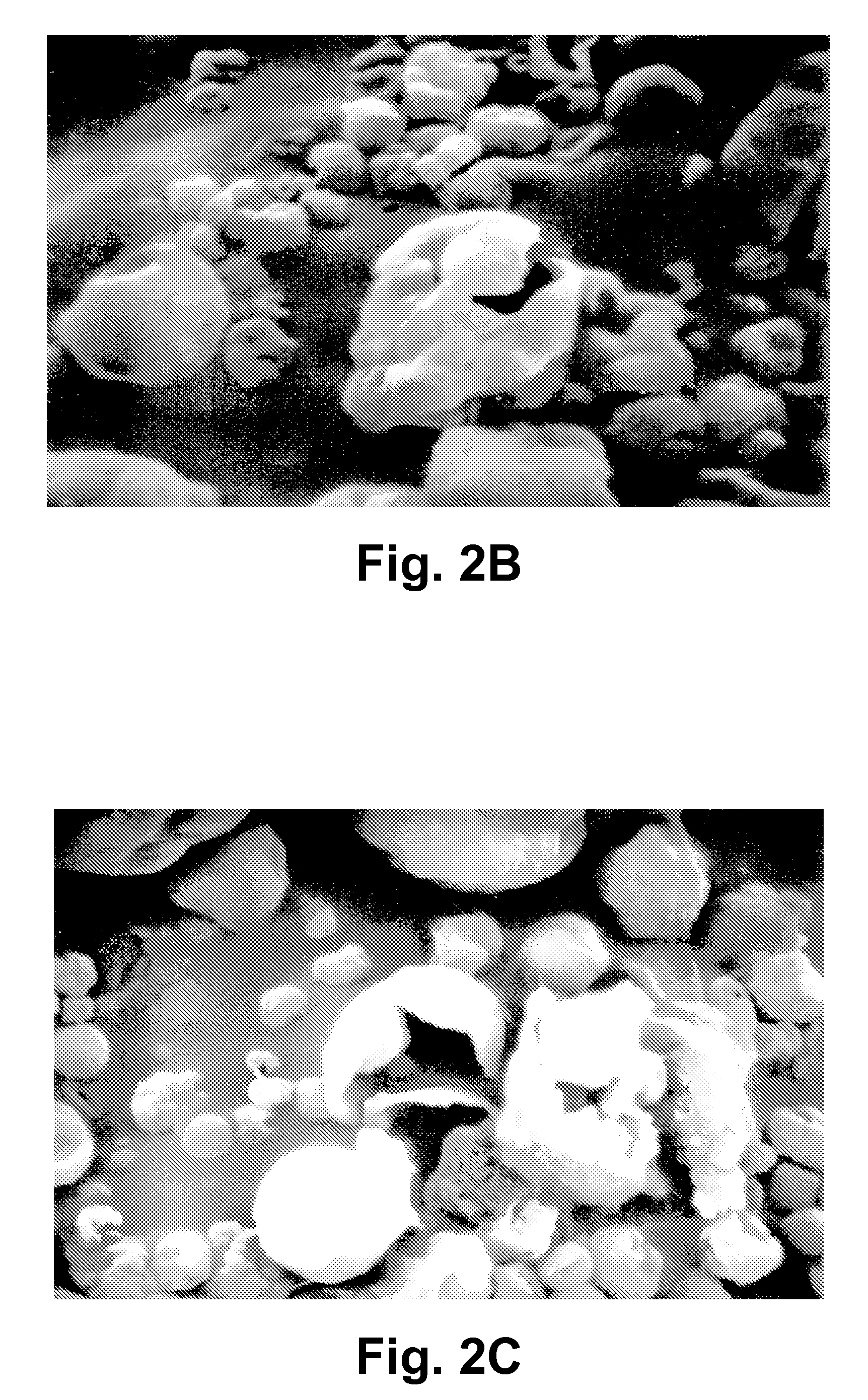Microencapsulated Oil Product and Method of Making Same
a micro-encapsulation and oil product technology, applied in bakery products, applications, instruments, etc., can solve the problems of reducing shelf life, reducing oxidative stability, and affecting the quality of finished food or beverage products, so as to achieve greater oil retention, improve microencapsulation efficiency, and reduce the effect of oil loss
- Summary
- Abstract
- Description
- Claims
- Application Information
AI Technical Summary
Benefits of technology
Problems solved by technology
Method used
Image
Examples
example 1
Determination of Protein Solubility
[0060]A preferred protein for use in the present invention has good solubility at 50° C. and lower solubility at pH 4.5, 21° C., to facilitate effective coacervation. To determine solubility, a ten gram sample of each protein source was mixed into 100 ml of deionized water and the pH of the mixture was determined. The samples were held at the required temperature for thirty minutes with stirring at about 145-190 rpm, then filtered through a Whatman #4 filter paper with vacuum. Duplicate samples of each filtrate were dried in a forced air oven at 130° C. for 2 hours, and the total solids remaining were dried and weighed to determine the solubility, i.e., the amount of solids that had been dissolved in the filtrate. For those samples evaluated for solubility at pH 4.5, the sample was mixed for thirty minutes at 50° C., then cooled to 21° C., and the pH was adjusted to 4.5 with 0.5 N HCl. The percent solubility of the protein sample was calculated as
%...
example 2
Preparation of Protein-Oil Coacervates
[0063]The following procedure was used to prepare protein-oil coacervates for each of the proteins of Examples 1(a), 1(c), 1(g), and 1(g) as indicated in Table 1. For each protein sample, 100 ml of a 10% solution (w / v) was prepared. The solution was heated to 50° C. to help dissolve the protein. To each solution was added 12 g of the structured lipid prepared as described above. The mixtures each were emulsified for one minute using a PT 10-35 Polytron® mixer, manufactured by Kinematica AG, Lucerne Switzerland operating at about 13,500 rpm. To each emulsification was added 50 ml of a 4% (w / v) solution of maltodextrin DE 10 sold under the name Star-Dri by A.E. Staley Mfg. Co, Decatur Ill., used as an emulsification agent, and emulsification was continued for one minute. The pH of each emulsification was adjusted to 4.5 using 0.5 N HCl, and the emulsifications were mixed gently at about 145-190 rpm for about two hours at room temperature. The resu...
example 3
Preparation of Whey Protein-Oil Coacervates
[0064]Using the whey protein sample of Example 1(f), respectively, 300 ml of a 10% solution (w / v) was prepared. The solution was heated to 50° C. to help dissolve the protein. To the solution was added 36 g of the structured lipid prepared as described above. The mixture was emulsified for one minute using a PT 10-35 Polytron mixer, manufactured by Kinematica AG, Lucerne Switzerland at about 13,500 rpm. To the emulsification was added 150 ml of a 4% (w / v) solution of maltodextrin DE 10 sold under the name Star-Dri by A.E. Staley Mfg. Co, Decatur Ill., for use an emulsification agent, and emulsification was continued for one minute. The pH of the emulsification was adjusted to 4.5 using 0.5 N HCl, and the emulsification was mixed gently at about 145-190 rpm for one hour at room temperature. The resulting mixture was then spray dried with an inlet temperature of about 180° C. and an outlet temperature of about 75° C. The product was in the fo...
PUM
 Login to View More
Login to View More Abstract
Description
Claims
Application Information
 Login to View More
Login to View More - R&D
- Intellectual Property
- Life Sciences
- Materials
- Tech Scout
- Unparalleled Data Quality
- Higher Quality Content
- 60% Fewer Hallucinations
Browse by: Latest US Patents, China's latest patents, Technical Efficacy Thesaurus, Application Domain, Technology Topic, Popular Technical Reports.
© 2025 PatSnap. All rights reserved.Legal|Privacy policy|Modern Slavery Act Transparency Statement|Sitemap|About US| Contact US: help@patsnap.com



